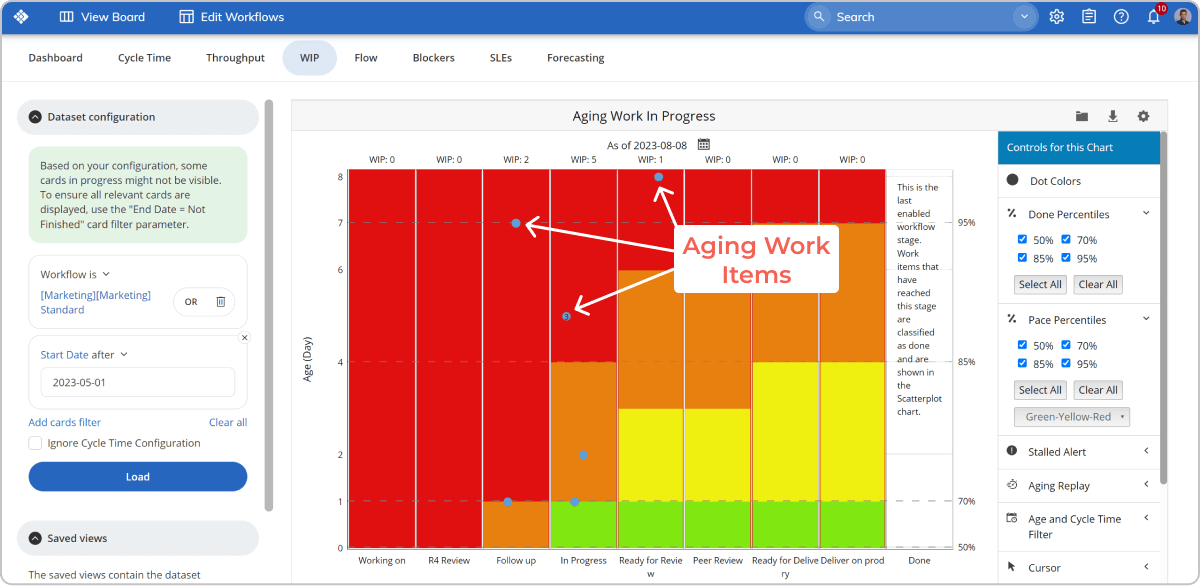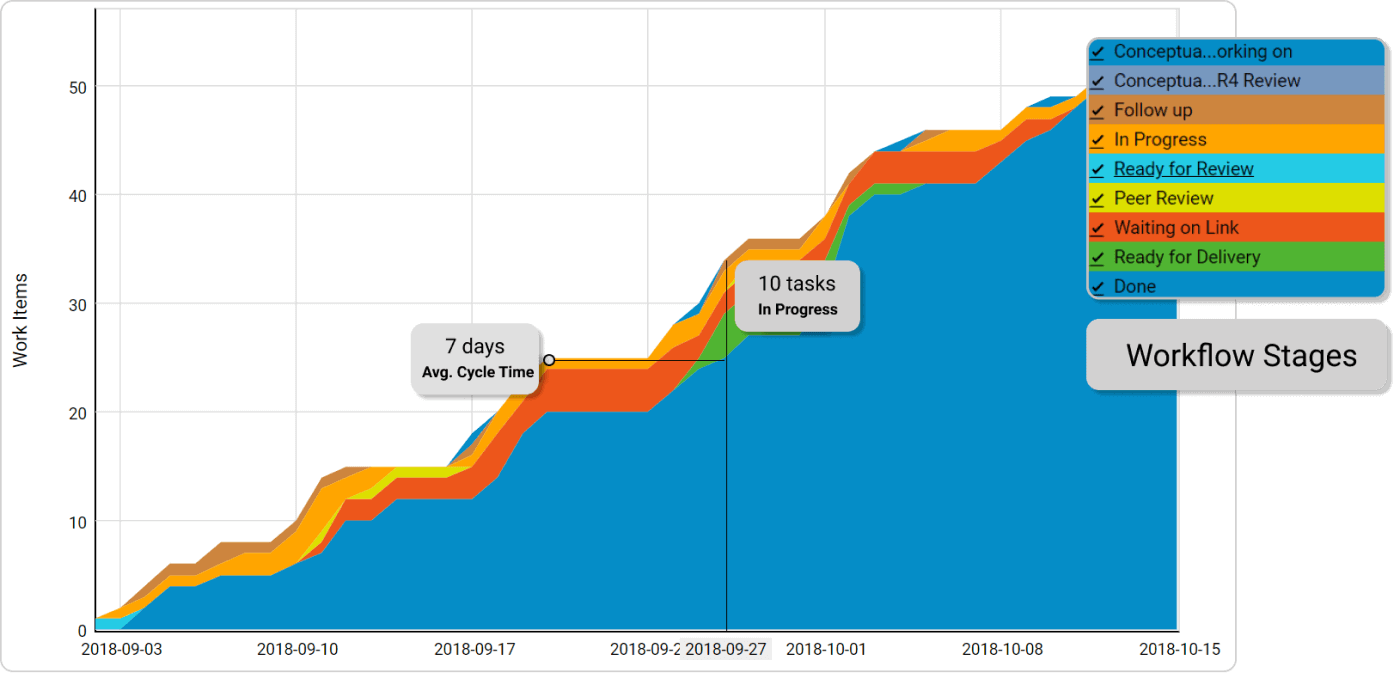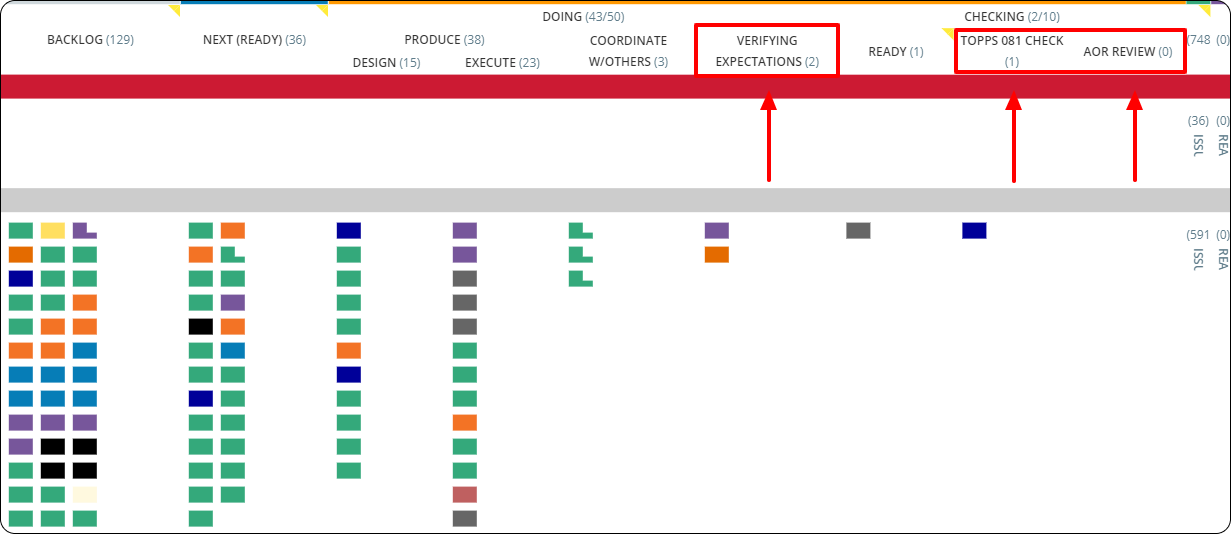Agile has become one of the most famous approaches to managing projects nowadays. Various industries, ranging from digital solutions to even complex industrial products, have started implementing its practices.
What about construction management, though? How can something as valuable as building a bridge or an oil pipeline rely on Agile project management to be completed? In truth, it's not very likely.
However, that doesn't mean that Agile can't help the construction industry deliver projects more successfully.
Let’s dig deeper into:
- What Agile in the construction industry really is?
- What are the key elements defining Agile project management in construction?
- In what areas can Agile help the construction industry?
- What are the benefits agility brings and the challenges it resolves?
- How does it work in practice?
What Is Agile Construction?
Agile construction is a project management approach emphasizing flexibility, collaboration, and continuous improvement in the construction industry. It involves breaking down large projects into smaller, more manageable work items and prioritizing them based on customer needs and feedback.
The goal is to deliver high-quality results quickly and efficiently while adapting to changing requirements and circumstances. The Agile approach is often used in software development but is becoming increasingly popular in construction.
What Are the Four Key Elements of Agile Project Management in Construction?
The four key elements of Аgile project management in construction are:
1. Collaboration and communication among team members and stakeholders.
2. Flexibility and adaptability to changes in project requirements or scope.
3. Using software to improve quality management and performance by removing complex manual processes.
4. Communicate constantly and provide feedback to key stakeholders about contractual limitations.
What Are the Features of Agile Construction Project Management?
Agile project management differs from traditional project management in various domains, from planning and documentation to team collaboration and customer involvement. Several factors are characteristic of the Agile construction management framework.
-
Project segmentation: In Agile projects, value is added through measurable, usable, segmented pieces. A traditional construction project management approach does not hand off individual project pieces to contractors and stakeholders.
-
Feedback loops: A culture of continuous improvement and development around core quality processes and operational capabilities is delivered using the agile framework that produces constant feedback loops for improving and optimizing performance.
-
Parameter acceptance: To implement Agile methodologies, construction project management must be viewed holistically, from design to construction, including facilities management.
-
Accelerated development life cycle: By ensuring consistent review and feedback processes, Agile construction processes deliver faster results.
-
Culture of communication: During Agile projects, teams communicate with stakeholders to receive approval or suggestions about improving performance to reduce inefficiency and improve quality.
How Can You Apply Agile in Construction?
Before we answer this question, let's first briefly look at the traditional construction process.
The construction project lifecycle usually goes through the following phases:
- Design
- Pre-construction
- Procurement
- Development
- Post-construction
Also, before the Design phase can begin, there is usually a shorter Conceptualization stage, which includes gathering the project's requirements.
 Image Credit: https://merxcm.com/
Image Credit: https://merxcm.com/
As you can see, the process is very linear, with no other stage beginning before the previous one is complete. After all, you can't build the second floor of a house without first laying the foundations, can you?
Applying Agile in Construction Through the Planning Phase
In reality, Agile is mostly applicable to the Planning (Design and Pre-construction) phase, where the rough construction work has not started yet. There, the focus of Agile construction teams is to create an iterative work process and frequently deliver value while being adaptive to changes. Through sketches, site plans, etc., they aim to collect initial customer feedback as fast as possible to ensure that requirements have been properly communicated. This allows them to adapt to changes early in the process, which is a lot cheaper in an industry such as construction than doing reworks later down the line.
Applying Agile in Construction Promotes "Systems Thinking" to Work Execution
Another technique that Lean/Agile construction teams use is to break down plans into more manageable pieces and progressively elaborate them as they get closer to execution. This is known as the Last Planner System (LPS), where the final plans are prepared by those responsible for executing the work. Just like any Lean/Agile project management method, it promotes "systems thinking" rather than "local optimization". The approach focuses on "pull planning", where only the most critical work that can be done is considered. As a result, this contributes to the creation of an environment of shared leadership.
 Image Credit: https://www.researchgate.net/
Image Credit: https://www.researchgate.net/
What Are the Current Challenges in Construction and How Agile Helps to Overcome Them?
As construction is one of the most complex industries that often create products of great public importance, naturally, the risk is extremely high. After all, it's far from uncommon for construction projects to be delayed and go over budget. Due to that, there is an increased need for enhanced communication, process visibility, and adaptability to emerging issues.
Below, we will discuss some common challenges the construction industry faces and see how an Agile approach to project management can help solve them.
Low Transparency in the Construction Process
A challenge that construction companies often face is the inability to properly track their processes from concept to execution, resulting in an environment of chaos. Often, there are a lot of "he said, she said" type of status updates with teams tracking their work in endless spreadsheets. This makes the already complex processes even more cumbersome.
To deal with this problem, Agile preaches visualization in every step of the workflow. In reality, this can be achieved with the integration of Kanban boards where Agile construction teams can visualize the stages (and substages) of their work process. Eventually, these boards will turn into value stream maps, providing teams with the ability to quickly discover constraints, eliminate waste, and promptly react to emerging issues.

Furthermore, making the work process more transparent helps bridge gaps between planning and execution. As mentioned above, the Last Planner System brings forward the concept of creating plans on multiple levels, which are then progressively elaborated. To bring that to practice, Agile construction teams can use multiple interconnected Kanban boards to connect the dots between setting up project milestones and the actual work-level execution.

For example, in Kanbanize by Businessmap, we do that by introducing both Strategic and Team Kanban boards. There, construction companies can break down their high-level plans into work packages and connect them with the teams responsible for their further elaboration and delivery.
 This creates a system for easy project status communication between all concerned parties and tracking the progress of the different work activities on multiple team Kanban boards.
This creates a system for easy project status communication between all concerned parties and tracking the progress of the different work activities on multiple team Kanban boards.
Poor Communication
Ineffective communication is given as one of the main reasons for many failed projects, regardless of the industry. No wonder Agile teams put forward "Individuals and Interactions" before "Processes and Tools". However, due to the high complexity of the construction industry's work process, there is often inadequate communication and a lack of accountability.
Integrating regular feedback loops to sync progress and discuss issues is Agile's way to solve that. For example, Agile construction teams engage in daily meetings where they present what work has been completed and what they are planning to get done and discuss anything standing in their way of accomplishing that.
This keeps everyone on the same page and ensures that any blockers are revealed as quickly as possible. Team members are also encouraged to get into follow-up conversations after the meeting and help each other if somebody is stuck.
 Feedback loops in Kanban
Feedback loops in Kanban
Another Agile best practice that construction teams can successfully adopt is the integration of regular Service Delivery Reviews. After completing their weekly, bi-weekly, or monthly plans (preference for the shorter time frame), they can engage in lessons-learned sessions, bringing up issues and suggesting improvements - related to both the execution and management of work. The idea here is to tackle more broad topics in the process while they are still relevant to the project.
Team members are also encouraged to provide input to construction managers and collaboratively decide how to make work processes better and faster. This contributes to an endless cycle of continuous improvement and a safe environment where people can freely voice their opinions.
Project Delays
Regular delays in construction projects are far from an exception nowadays. A study from Mckinsey shows that large projects typically take 20% longer to finish, which results in 80% cost overruns. In contrast, another research shows that only 25% of projects came within 10% of their original deadlines.
Project Delays Due to Low Predictability in the Work Process
Of course, the reasons for those delays can range from inaccurate budgets to problems with contractors. However, another cause lies within unstable and cumbersome processes that lead to less predictability, and this is where Agile has a solution to offer.
For example, construction teams can use different Lean/Agile metrics to record how long their work activities take to flow through their entire process (lead time) and different parts of it (cycle time). Furthermore, throughput data shows how much work is getting done in a particular reporting interval, which helps produce better forecasts of what can be completed on average in the future.
Other than that, in our software platform, you can daily monitor your work in progress through the Aging WIP chart. The tool stores historical cycle time information from your process and helps you track how certain tasks are ageing day by day. Based on this data, you can spot work items that accumulate risk of deviating from their historical cycle times and then take necessary actions early in the process, before the delays occur.

In addition, Cumulative Flow Diagrams can also help Agile construction teams track their workflow's stability and see where too much work gets cluttered. This can help them reveal bottlenecks and optimize their process efficiency.

Project Delays Due to Rework
Another reason for extensive project delays and cost overruns in the construction industry is the accumulation of constant rework. For example, a study shows that around 30% of the work performed by construction companies is actually reworking.
Lean/Agile techniques aim to deal with that by introducing regular and short quality assurance steps in the project lifecycle. Usually, good practice in Lean is to shorten as much as possible or even remove altogether the big Quality Control stage of a given output. However, when managing construction projects, that might not be possible. Still, by visualizing and implementing frequent monitoring steps to ensure quality is continuously built-in, you will react to issues faster and reduce the amount of excessive rework that causes overspendings and project delays.

The Future of Construction Project Management
According to KPMG research, the next-generation construction company has the following distinctive elements:
- A changing view and organization agility
- Offers scalable and adaptive services
- Offers real-time project value and performance data
- Functions in a highly automated environment
- Implementing new technologies to achieve project outcomes (McKinsey & Company)
- Improved organizational risk management (KPMG)
As one of the main pillars of agility in terms of project management, transparency is foundational for achieving organizational agility in the construction industry. Once you achieve that, you can gradually start looking for other enhancements such as efficiency improvements, finding better ways to track plans, etc. This is exactly what a Lean/Agile method such as Kanban promotes - "Start what you do now" by visualizing your processes first, and then "pursue incremental, evolutionary change".
Real-Life Example of Implementing Kanban in the Construction Industry
The theory is an excellent first step, but when it comes to implementing Lean/Agile practices in the construction industry, you need to see how things happen in practice too. That's why it's time we back up everything said with a real-life case study of a construction company that improved its process efficiency and project delivery with Kanban's help.
Suffering from ineffective communication, lack of process transparency, communication issues between various teams, struggle with revealing waste in the system, etc., the organization's management turned to Kanban for solutions.
The adoption of its practices provided the company with some immediate benefits, including:
-
Increased transparency through better process visualization achieved by introducing digital Kanban boards
-
Enhanced communication by introducing visual indicators for various scenarios
-
Seamless breaking down of projects and tracking completed versus remaining work flowing through all construction phases
-
Better management of dependencies between different teams
-
Improved process efficiency through automation
- Improved process predictability
Agile in Construction Frequently Asked Questions (FAQ)
How Is Agile Used in Construction?
Agile methodology is not commonly used in traditional construction projects. However, some construction companies have adopted Agile principles to improve project management, increase collaboration, and reduce waste. Agile can be used in construction by breaking the project into minor, manageable phases or sprints, allowing for more frequent feedback and adjustments.
This approach can minimize delays and improve workflow efficiency in the construction process. Additionally, Agile can promote communication and collaboration between project stakeholders, such as the design team, contractors, and owners.
Get to Know All the Benefits
of Using Kanban in the Construction industry.
In Summary
Even though the construction industry is highly sequential and complex, Agile finds its way even here. Some of the major problems that an Agile approach to project management helps construction companies solve include:
- Low transparency - through the introduction of interconnected Kanban boards
- Poor communication - through regular daily and weekly cadences for syncing progress and discussing better ways of managing the work process
- Project Delays - through aiming to reduce rework and measuring relevant lean/agile metrics to optimize workflow efficiency





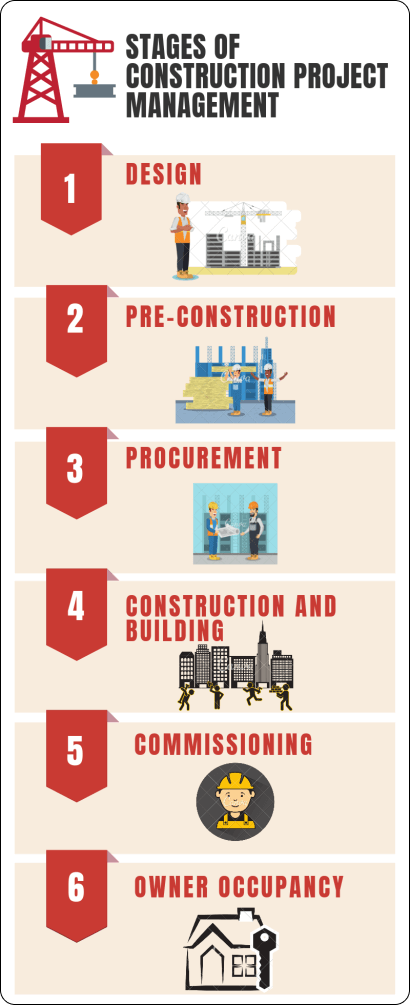 Image Credit:
Image Credit: 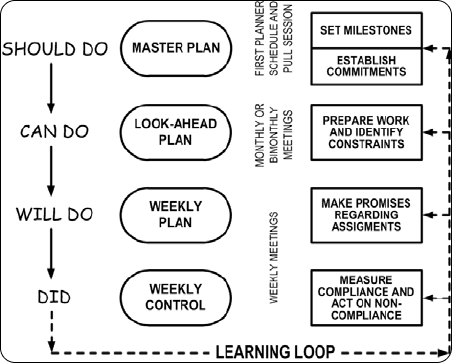 Image Credit:
Image Credit: 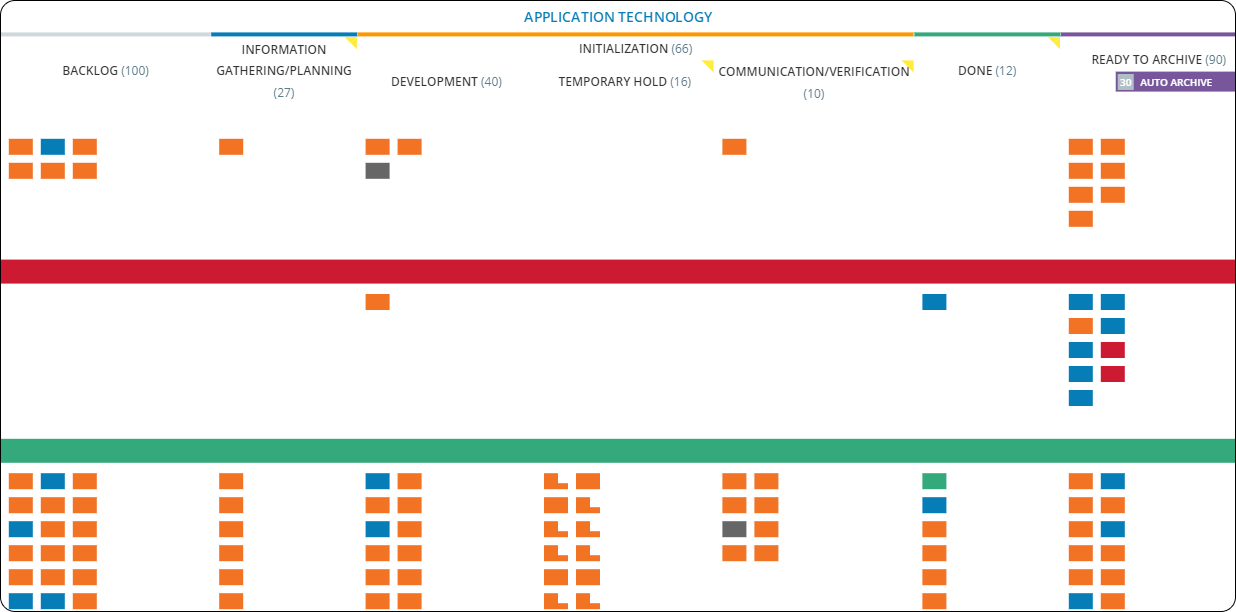
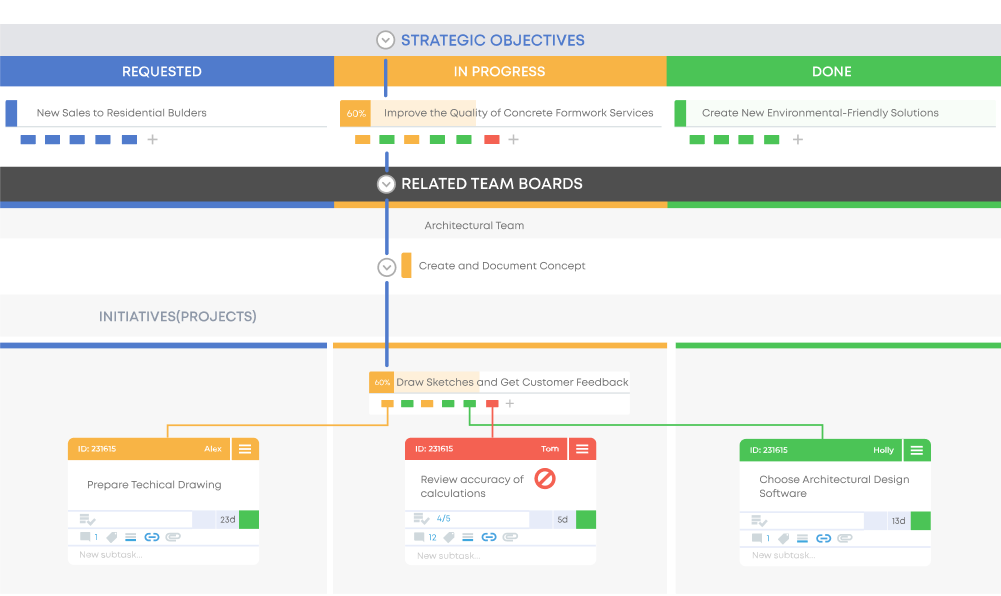
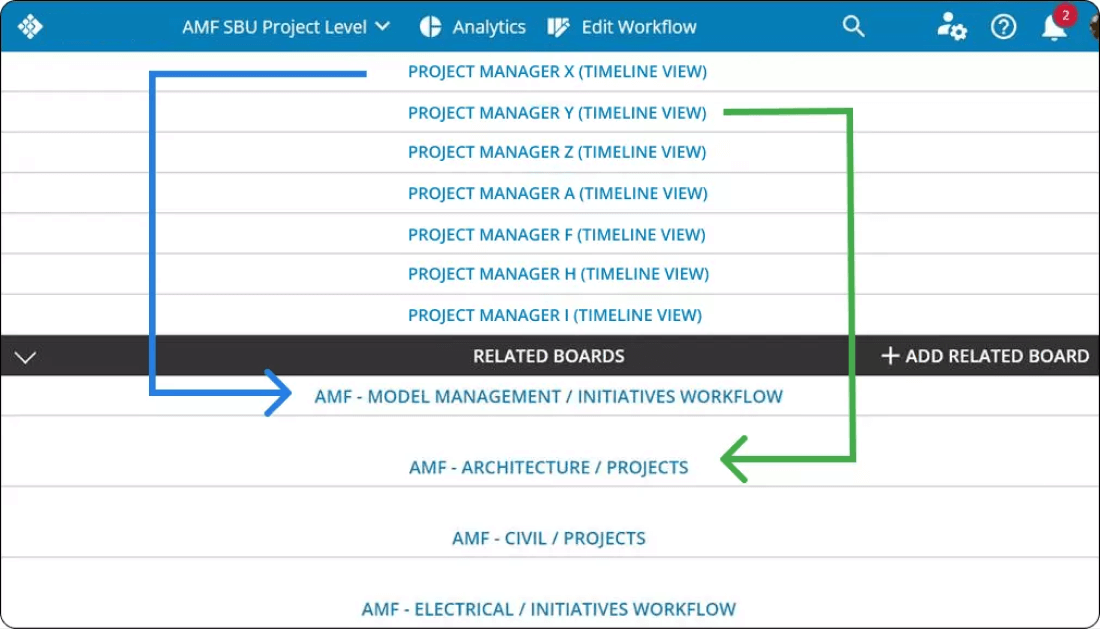 This creates a system for easy project status communication between all concerned parties and tracking the progress of the different work activities on multiple team Kanban boards.
This creates a system for easy project status communication between all concerned parties and tracking the progress of the different work activities on multiple team Kanban boards.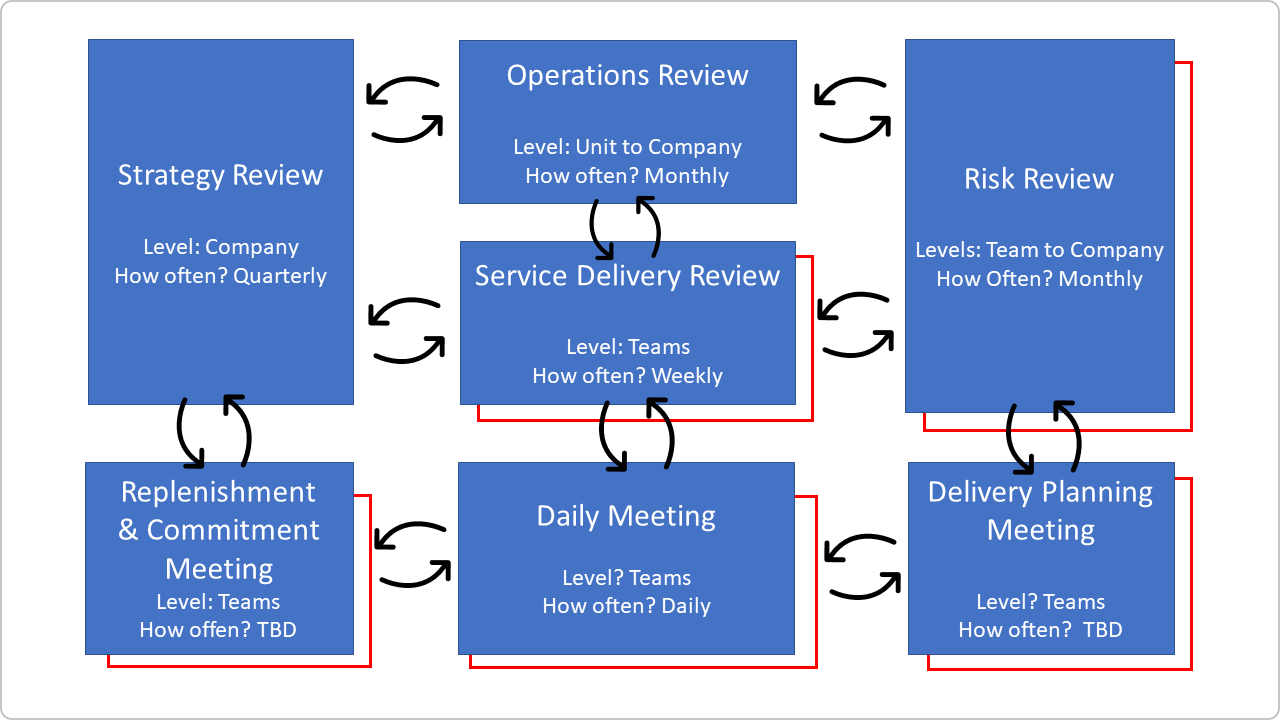 Feedback loops in Kanban
Feedback loops in Kanban